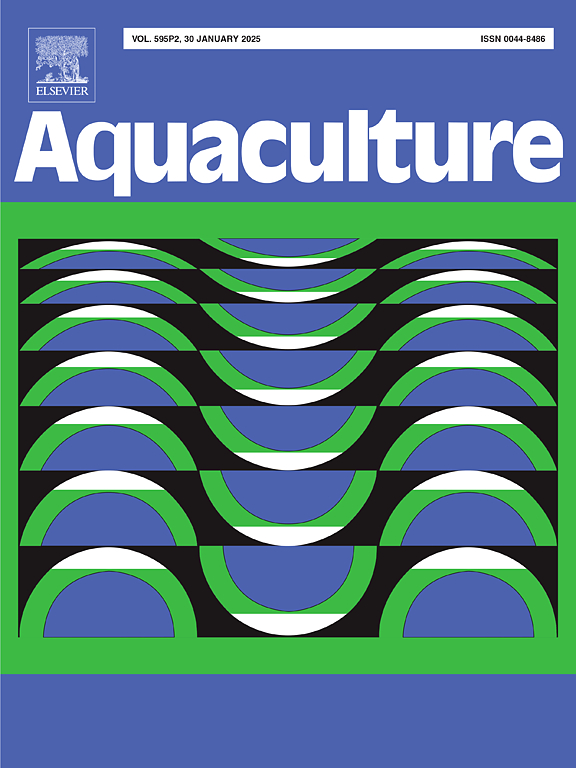Effects of hybridization on growth, nutrition and reproductive potentiality of the Pacific oyster: Examination of annual variation in phenotypic and biochemical composition
IF 3.9
1区 农林科学
Q1 FISHERIES
引用次数: 0
Abstract
The Pacific oyster (Crassostrea gigas) is a key aquaculture species, contributing significantly to global marine production. Hybridization between different populations or strains of C. gigas can significantly improve its growth, survival or stress tolerance. However, the effects of hybridization on biochemical composition and reproductive potentiality were poorly understood. In this study, the growth, nutrient variations and reproductive potentiality of “Haida No. 1” (HH) line, Orange-shell line (OO) and their hybrids (OH, OO ♀ × HH ♂) of C. gigas were comprehensively investigated from February 2021 to January 2022. The shell height and living weight of OH were significantly higher than those of HH and OO throughout the year, except for the first four months, showing high-parental heterosis ranging from 7.58 % to 16.22 % for shell height and 6.97 % to 13.47 % for living weight, respectively. Glycogen and lipid decreased significantly after gamete discharge (summer) and gradually accumulated when the gonads were inactive (winter) in the four tissues. However, the protein content did not undergo significant alterations during either the reproductive or non-reproductive periods in the gill and muscle. In addition, the glycogen content and lipid content in the mantle and gonad-visceral mass of OH were higher than those of HH and OO, and the protein content consistently exceeded 50 % of dry weight in all three lines. All three of these C. gigas lines can be considered as high-quality food sources. The hybrid line (Orange-shell line ♀ × “Haida No. 1” ♂) of C. gigas appears to be the most nutritionally valuable variety. Moreover, the lagging gonadal development was not identified in the hybrid population (OH) compared to the inbred population (OO). Furthermore, the reproductive efforts and hatching rates in OH were significantly higher than those in OO, implying depression of reproductive potential as a consequence of inbreeding can be abolished or even enhanced through hybridization. Our study provides evidence that hybridization can improve the growth and nutritional quality of oysters, as well as ameliorate the deterioration of reproductive capacity caused by inbreeding, which can help us to better understand and employ hybridization in oyster aquaculture.
求助全文
约1分钟内获得全文
求助全文
来源期刊

Aquaculture
农林科学-海洋与淡水生物学
CiteScore
8.60
自引率
17.80%
发文量
1246
审稿时长
56 days
期刊介绍:
Aquaculture is an international journal for the exploration, improvement and management of all freshwater and marine food resources. It publishes novel and innovative research of world-wide interest on farming of aquatic organisms, which includes finfish, mollusks, crustaceans and aquatic plants for human consumption. Research on ornamentals is not a focus of the Journal. Aquaculture only publishes papers with a clear relevance to improving aquaculture practices or a potential application.
 求助内容:
求助内容: 应助结果提醒方式:
应助结果提醒方式:


